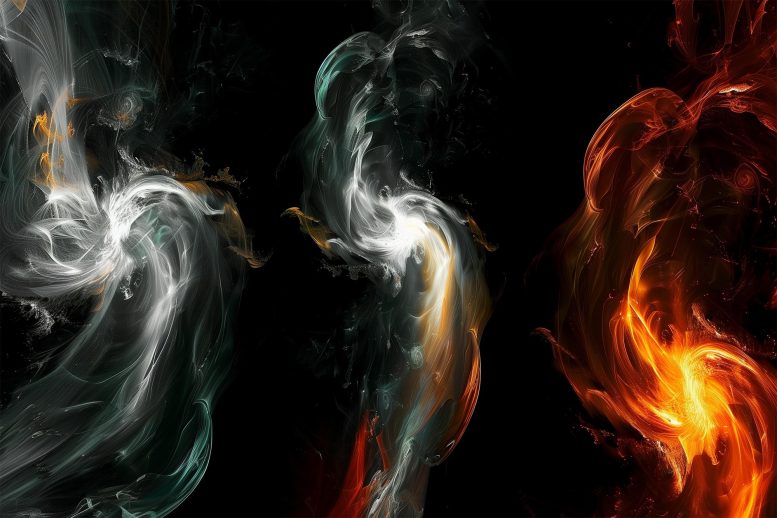
A recent study reveals that “odd viscosity,” a unique property where fluid particles spin uniformly, can cause regular patterns to emerge from the chaotic motion of turbulent fluids, such as those seen in a tumbling river or jet engine outflow. This discovery highlights the potential of controlling turbulence and has implications for natural phenomena like the solar corona and solar wind. Credit: SciTechDaily.com
Physicists have demonstrated the emergence of patterns from chaos in turbulent fluids.
The turbulent motion of a tumbling river or the outflow from a jet engine is chaotic: that is, it contains no obvious pattern.
But according to a new study, regular patterns can emerge from the turbulent motion of fluids. What you need is an intriguing property called “odd viscosity” that arises under certain conditions, such as when the particles in the fluid all spin in the same direction. Though it’s a specialized circumstance, there are many contexts in nature where a version of this effect may exist, such as in the corona of the sun and the solar wind.
“This surprising effect may add to the growing toolbox to control and shape turbulence,” said Michel Fruchart, formerly a postdoctoral researcher at UChicago, now faculty at the French Centre National de la Recherche Scientifique (CNRS) and co-first author of the paper describing the findings.
The study, a collaboration between the University of Chicago, Eindhoven University of Technology in the Netherlands, and CNRS, was published in the journal Nature.
A chaotic nature
Despite how much we’ve learned about classical physics in the past centuries, there’s one problem that still resists full explanation: the phenomenon known as turbulence. Though turbulence appears every day around us—from the clouds churning in the atmosphere overhead to the very blood flowing through our vessels—it is still not as well understood as other common physical phenomena.
“Turbulence might be commonplace in nature, but it is still only partially understood,” said Xander de Wit, co-first author of the publication and a Ph.D. student with Eindhoven University of Technology.
This is despite the fact that if we could understand and control turbulence, we might be able to achieve many breakthroughs; perhaps we could design more efficient airplane wings, engines, and wind turbines, for example.
However, there are things scientists do know about turbulence. If you shake a bottle of water, you’ll see eddies forming. They start out at roughly the size of the length of the bottle; then the eddies split into smaller eddies, and then again into smaller eddies, and so on until the eddies dissipate. This is known as a cascade. But if you do the same thing but confine the water to a thin layer, the eddies will instead merge to form one big vortex—the Great Red Spot on Jupiter’s surface is an example of this phenomenon, said Fruchart.
The group of scientists wondered if it was possible to make, and hold, medium-size eddies—neither one big eddy, nor smaller and smaller ones.
The answer is yes—if your fluid is displaying a property known by the term “odd viscosity.”
Viscosity usually means a measurement of how hard it is to stir—for example, it’s harder to stir a jar of honey versus a jar of water. In normal viscosity, the movement dissipates the energy you’ve injected to it by stirring with your spoon. But “odd viscosity” changes the way objects move but doesn’t dissipate energy. It’s been seen in certain rare conditions in the laboratory.
The researchers built a simulation where the particles displayed ‘odd viscosity,’—in this case, by making all of the particles of the fluid spin like tops. Then, by tweaking the parameters, such as how fast the particles spin, the researchers found a surprise. At a particular point, they began to see patterns instead of random eddies.
“The trick, we found, is to create a mixed cascade, where large eddies tend to split and small eddies tend to merge,” said Fruchart. “If you get the balance just right, you see patterns form.”
“When we first saw these effects, we didn’t fully understand what we were looking at, but you could tell there was something different even to the unaided eye,” said study co-author and UChicago Ph.D. student Tali Khain. “We had to develop a theory to explain it, and that was really exciting.”
Though not all particles in fluids spin like tops, there are examples in nature. For example, electrons or polyatomic gases in a magnetic field do behave this way.
“In addition to the sun and solar wind, there are diverse contexts where a version of this effect may exist, including atmospheric flows, plasmas, and active matter,” said UChicago Prof. Vincenzo Vitelli, one of the senior authors on the paper.
As the scientists work to develop a fuller understanding of their findings, they hope it will lead to a better understanding of the interplay between eddies and waves in turbulent flows.
“We are only at the beginning,” Vitelli said, “but I am fascinated by the idea that you can take a turbulent state that is the epitome of chaos, and use it to make patterns—that is a profound change made by just a twist on the smallest scale.”
Reference: “Pattern formation by turbulent cascades” by Xander M. de Wit, Michel Fruchart, Tali Khain, Federico Toschi and Vincenzo Vitelli, 20 March 2024, Nature.
DOI: 10.1038/s41586-024-07074-z

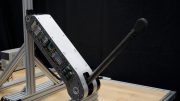

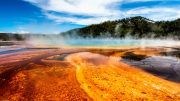

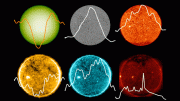

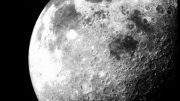

A recent study reveals that “odd viscosity,” a unique property where fluid particles spin uniformly, can cause regular patterns to emerge from the chaotic motion of turbulent fluids, such as those seen in a tumbling river or jet engine outflow. Very good! This is using mathematical language to describe nature. The universe does not do algebra, formula or fraction. The universe is geometrythe,and is the superposition, deflection, and twisting of geometric shapes.
Please think carefully,
1. How are the geometric shapes of the physical world formed?
2. Is the gravity of the physical world related to the spin of topological vortices?
3. Is the formation of matter related to spin?
4. How do cosmic vortices form?
5. Are the fluid particles spin uniformly related to topological vortices spin?
6. How to describe the spin of topological vortices in mathematical language?
7. Are so-called academic journals (such as Physical Review Letters, Nature, Science, etc.) scientific and honest?
8. Why are opposed and hated the following statements by some people and so-called academic journals?
and so on.
Today, we have already entered the era of the internet. With the help of artificial intelligence and big data, discussions on scientific knowledge have become open and transparent. However, a group of editors of so-called academic journals (such as Physical Review Letters, Nature, Science, etc.) are self-righteous and mystifying themselves. They only care about their own so-called sufficiently high priority rating, general significance, discipline, novelty, etc., and do not care about what science and pseudoscience are.
Science and pseudoscience are not determined by a publication, an organization or a person, nor by you or me, but by mathematics the final say. Physical models must be based on mathematics or mathematical models in order to be scientific, convincing, and in accordance with natural laws.
The origin of geometry lies in the concerns of everyday life. The branch of geometry (mathematics) known as topology has become a cornerstone of modern physics. Topological vortex and antivortex are two bidirectional coupled continuous chaotic systems. They exhibit parity conservation, charge conjugation, and time reversal symmetry. The synchronization effect is extremely important in their interactions. The synchronization effect of the superposition, deflection, and twisting of multiple or countless topological vortices will make spacetime motion more complex. To understand this complex world, physics should respect the authenticity of topological vortex in low dimensional spacetime, rather than simply relying on a few formulas, numbers, or imagined particles.
Spin is a natural property of topological vortices. Spin is synchronized with energy, spin is synchronized with gravitation, spin is synchronized with time, spin is synchronized with evolution. The perpetually swirling topological vortices defy traditional physics’ expectations. One physical properties of topological vortices is them to spontaneously begin to change periodically in time, even though the system does not experience corresponding periodic interference. Therefore, in the interaction of topological vortices, time is both absolute and relative,and physics often requires treating space and time at the same level.
Low-dimensional spacetime matter is the foundation of high-dimensional spacetime matter. Low-dimensional spacetime matter (such as topological vortex) can form new material structures and derive more complex physical properties via interactions and self-organization. It is extremely wrong and irresponsible to imagine low dimensional spacetime matter using high-dimensional spacetime matter,such as a cat in quantum mechanics.
Science must follow mathematical rules. For example, the Standard Model (SM) is considered to be one of the most significant achievements of physics in the 20th century. However, the magnetic moment of μ particle is larger than expected, revealed by a g-2 experiment at Fermilab, suggests that the established theory (such as SM) of fundamental particles is incomplete. Furthermore, the SM omitting gravitation, it not involved the time problem and when the particle movement starts. Mathematics is the foundation of science. Physics must respect the scientific nature of mathematics and mathematical models. The SM must be based on mathematical models in order to be scientific, convincing, and in line with natural laws.
I hope researchers are not fooled by the pseudoscientific theories of the Physical Review Letters (PRL), and hope more people dare to stand up and fight against rampant pseudoscience.
The so-called academic journals (such as Physical Review Letters, Nature, Science, etc.) firmly believe that two high-dimensional spacetime objects (such as two sets of cobalt-60) rotating in opposite directions can be transformed into two objects that mirror each other, is a typical case of pseudoscience rampant.
If researchers are really interested in Science and Physics, you can browse https://zhuanlan.zhihu.com/p/643404671 and https://zhuanlan.zhihu.com/p/595280873.
I am well aware that my relentless repetition can make some people unhappy, but in the fight against rampant pseudoscience, that’s all I can do.
I have a theory that parallels this finding it has to do with our milky way and how it began to the present day. we know that nebulas of gases are the nurseries of star formation, and hydrogen is the starting building block of composition of elements. Say a black hole of specific size enters a area of space occupied with a nebula of mostly hydrogen gas the black hole starts to ingest the gases, pulling the influenced gas to eventherizon, the massive area being the voided area of space that are galaxy resides enveloping the gases over time would create a spiral motion of forming stars from a disorganized gas to a organized structure spinning and gathering any influenced gases to the magnetic field arms of a spinning black hole over very long periods, millions of years the arms become more cluttered with stars and planets illuminating a structure of a spiral galaxy, the advent to the collation of hydrogen to form elements fuels the engine of motion to spin.the area that was influenced by field magnetics of the black hole is voided of gases and empty of any amount of hydrogen in the area of the black hole fields influence. The milky way is said to be in a area of the universe of vast emptiness unlike most the observable clusters of galaxies. this article of fluid turbulence from chaos to patterns tends to show a parallel understanding.